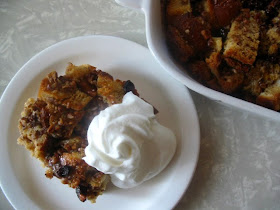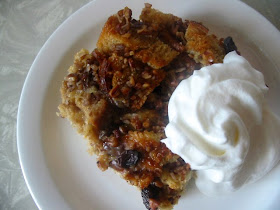
I'm so excited to finally post these, I've been really
really determined to make sugar skulls for Dia de los Muertos. Last year I purchased some fancy skull molds and the holiday came and went without any sugar skulls in sight. I think I got caught up in the recipe, every one I saw required meringue powder and I could not find any to save my life.
This time around I thought I'd try to make these with egg whites, after all meringue powder is made from dehydrated whites and I had a few leftover from making
pan de muertos.
But then I hit a brick wall when I could not find those pricey skull molds I bought. They had vanished into the abyss of my kitchen storage (or did I purge them or lend them out? who knows.) so I had to figure out an alternative. Luckily I had a bunch of eggshells, also from making
this and they wound up working perfectly.
The best part about all this is there's no fancy equipment or special ingredients needed. You can make these with what you've already got in your kitchen. Read on for the procedure and recipes (Note: These are NOT edible).
Sugar Skulls2 c sugar
1 room temperature egg white
egg shells or skull molds
Beat the egg white for 3-5 minutes on high until foamy. Start by adding 2 tablespoons of the foam* to the sugar and mix well to combine. You want the sugar to reach the consistency of wet beach sand, it should hold its shape when pressed or squeezed. Add a bit more of the foam if needed.
*Be sure you are only adding foam and not liquid to the sugar, otherwise it may become too wet. Try to skim the foam from the top (there will still be liquid egg white underneath).

Make sure the egg shells (or molds) are clean and dry before filling. Fill each to the top and press down to pack in the sugar. Allow them to dry for at least 24 hours. Also do not attempt to make sugar skulls on a humid day, the sugar will not set.

After they have been allowed to dry turn the shells over and tap the sides with the edge of a spoon to crack the shell and release the sugar. They should come out easily but the shell may need to be broken off.

Lay the skulls out with their flat sides down, then start sculpting. Don't worry. This is not as difficult as you might think. I used a grapefruit spoon to flatten, scrape, and chisel out very primitive skull shapes. The sugar comes away easily and within a few minutes you've got a basic shape that will be perfect to decorate however you'd like.
Once these are all sculpted you'll need to get decorating. Royal icing is your best bet for decorating these, it dries hard and can be colored fairly easily. While you're at it grab a few little embellishments if you like. Beads, bits of paper, and sequins are great to add color and visual interest.
Royal Icing4 c powdered sugar
3 room temperature egg whites
1/2 tsp. cream of tartar
food coloring
Add all ingredients and beat slowly until combined. Beat for 7-10 minutes until shiny and stiff.
I divided the icing and tinted it green, blue, yellow, and pink (I also left some white) using a few drops of food coloring. Spoon the icing into small ziploc bags and cut a tiny piece off the corner to form a makeshift pastry bag. Royal icing starts to dry as soon as its made so don't leave it sitting out. Its also a good idea to keep a wet towel handy to clean up any messes as you decorate.
Add features to each of the skulls and any extra embellishments you might want. Let them sit out for a few minutes to dry completely.
Sugar skulls are beautiful on a traditional Dia de los Muertos altar but they would also make great favors or place settings for a party. In the photo below I've simply glued the skull in the center of a paper flower. The paper flower tutorial will be posted soon.








 Chicano Pop Art by Patrick Murrilo
Chicano Pop Art by Patrick Murrilo
 I draped the table (and several boxes) in a colorful throw and set out bouquets of paper flowers, candles, and sugar skulls. It is believed that the dead need nourishment after their long journey home so food and water are always placed on the altar. I have the traditional pan de muertos and tamales, I also set out marranitos which he always begged for, and of course a bowl of kibble and his water dish.
I draped the table (and several boxes) in a colorful throw and set out bouquets of paper flowers, candles, and sugar skulls. It is believed that the dead need nourishment after their long journey home so food and water are always placed on the altar. I have the traditional pan de muertos and tamales, I also set out marranitos which he always begged for, and of course a bowl of kibble and his water dish.




 Hank seems to get something different each time we go. This time the quesadilla.
Hank seems to get something different each time we go. This time the quesadilla. Me? The first thing I tried there was this Tostada Siberia. As big as your face and stuffed with chicken, crema, and an avocado sauce. I love it because I just pile on the salsa and munch on the jalapeno and it reminds me of eating fried chicken minus the bones and grease. Also the tostada shell stays crisp. Even after spending a day as leftovers in the fridge. Rad.
Me? The first thing I tried there was this Tostada Siberia. As big as your face and stuffed with chicken, crema, and an avocado sauce. I love it because I just pile on the salsa and munch on the jalapeno and it reminds me of eating fried chicken minus the bones and grease. Also the tostada shell stays crisp. Even after spending a day as leftovers in the fridge. Rad.

































